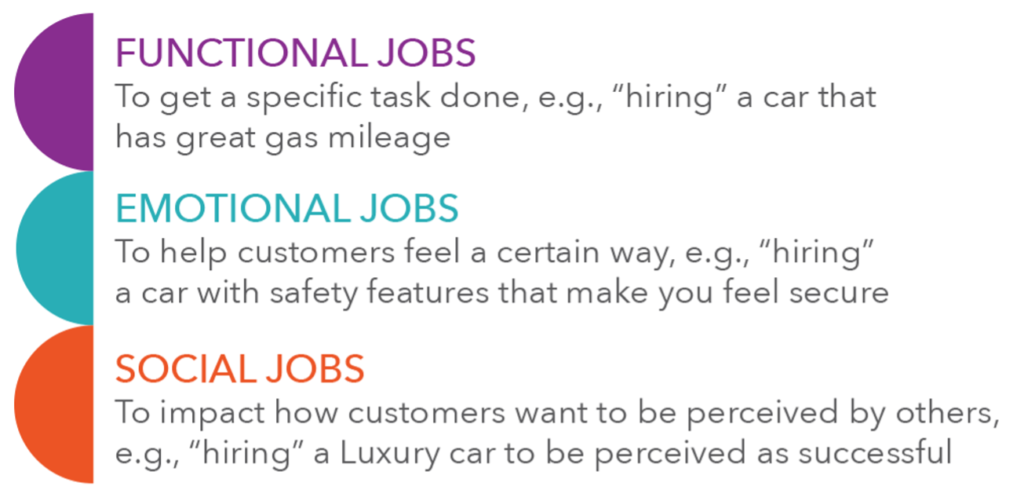By Cindy Blackstock
We’ve all hired someone to complete a task or a job for us. For example, if your lawn needs to be mowed – you can hire someone to mow it. Seems simple, doesn’t it? But have you ever asked that question about the products or services you work with? Do you know what “job” your customers need done, that is causing them to “hire” your product or service?
Customer needs are often less clear than ‘your lawn needs to be mowed.’ Identifying customer needs or “jobs to be done” is an intentional exercise where we must listen, observe and expertly question customers to uncover.
Jobs Theory
Jobs Theory reframes our relationship with customers, making them the center of our focus. While conventional marketing tends to focus on brand and product benefits, Jobs Theory doesn’t look internally at products and services but instead, looks externally, to expose the functional, social, and emotional jobs that explain why customers make the choices they do.

People don’t simply buy products or services; they bring them into their lives to fulfill a need. We call this need the ‘job’ they are trying to get done. When we discover why customers want to ‘hire’ products or services, we develop a customer-centric view, allowing brand teams to become empathetic to their customers’ needs and wants.
Trending for SIVO: What Does a Remote Workforce Really Want? You Need to Dig Deeper to Find Out
Identifying Customer Needs with a “Jobs to be Done Map”
A good Jobs to be Done Map becomes a framework that helps marketers figure out how to improve their products or innovate by developing new products and services in their industry or category, i.e., ‘where to play.’ It can be leveraged beyond a single initiative. It maps all the jobs that customers have for a particular occasion. For example, a Snacking JTBD Map includes all the jobs that customers have for the snacking occasion. A Financial Investment JTBD Map, includes all the jobs that customers have for investing their money. It lives on in your organization as a place to continually go back to for inspiration and focus. It provides:

Inspiration and guardrails for brand positioning, marketing messages, product innovation and renovation

A framework for capturing, defining, categorizing, and prioritizing customer needs

A common language and focus for the cross-functional team
Factors That Influence Customer Behavior
There are several factors that influence customer behavior, including:
- Customer Needs and Goals – Customers use products that help them achieve their goals and meet their needs. If your product does not effectively address these needs and goals, customers are unlikely to hire it.
- Product Features and Benefits – The features and benefits of your product can also influence customer buying behavior. Customers are more likely to buy products that offer the features and benefits that they are looking for.
- Brand Reputation – The reputation of your brand can also influence customer behavior. Customers are more likely to buy products from brands that they trust and that have a positive reputation.
- Customer Experience – Customer experience can also impact purchasing behavior. Customers are more likely to purchase products that offer a positive and seamless experience, from purchase to use.
- Competitor Offerings – Competitor offerings can also influence customer buying behavior. If your competitors offer products that better meet customer needs and preferences, customers may choose to “hire” those products instead of yours.
Partner with SIVO to Identify Customer Needs for Your Business
At SIVO, we help our clients uncover their customers’ jobs for a wide range of application opportunities. We design customized research that leads to a fully developed Jobs to be Done Map. Our approach focuses on uncovering the subconscious drivers of customer decision-making by understanding the underlying needs and true motivations.
In Part 2 of our Jobs series, we will share the keys to success for Jobs to be Done mapping along with some examples of how it comes to life. Until then, please reach out to discuss how we can help you to get your brand, product, or service hired.
Reach out to the SIVO team at Contact@SIVOInsights.com to discuss how we can develop a Jobs to be Done Map for your organization.


